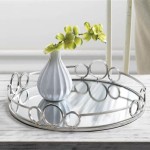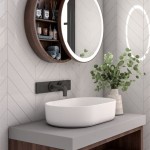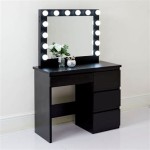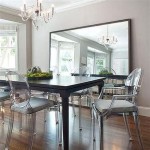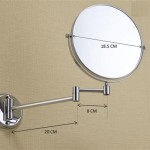Building a Frame for a Mirror: A Step-by-Step Guide
A mirror frame can elevate a simple mirror into a stunning focal point for your room. It can add warmth, style, and personality to any space. Building a custom frame for your mirror allows you to tailor the design to your exact preferences and achieve a truly unique piece. This guide will provide a comprehensive breakdown of the steps involved in building a frame for a mirror, equipping you with the knowledge to embark on this rewarding project.
Choosing the Right Materials
The first step in building a mirror frame is selecting the right materials. The choice depends on the style and weight of the mirror, as well as your desired aesthetic. Here are some popular options:
- Wood: This is a classic choice for framing mirrors. It comes in various types, each offering distinct properties. Pine is affordable and easy to work with, while hardwoods like oak and walnut offer durability and a richer appearance. You can choose from solid wood or MDF (Medium Density Fiberboard) for a more budget-friendly option.
- Metal: Metal framing provides a modern and sleek look. Aluminum is lightweight and corrosion-resistant, while steel offers greater strength. You can find metal strips specifically designed for framing.
- Plastic: While not as common for mirror frames, plastic is a lightweight and durable option. It comes in a variety of colors and textures, making it a versatile choice for contemporary styles.
Consider the size and weight of your mirror when selecting the material. Heavier mirrors will require sturdier framing materials like hardwood or metal.
Measuring and Cutting the Frame Components
Once you've chosen your material, you'll need to accurately measure the mirror and cut the frame components. Here's how:
- Measure the mirror: Carefully measure the length and width of the mirror, noting the dimensions.
- Calculate frame dimensions: Determine the desired depth and width of the frame. The frame's width will add to the mirror's overall dimensions.
- Cut the frame pieces: Using a saw, precisely cut the frame pieces to the calculated dimensions. If using wood, make sure to cut the pieces with the grain for added strength.
- Create mitered corners: If you want a clean, professional look, cut the ends of the frame pieces at a 45-degree angle. This creates mitered corners that fit together perfectly.
It's crucial to make accurate measurements and cuts to ensure the frame fits properly. Use a miter saw for precise angle cuts if available.
Assembling the Frame
Now it's time to assemble the frame. Here's a step-by-step guide, assuming you're using a mitered frame:
- Apply glue: Apply a thin layer of wood glue or construction adhesive to the cut ends of each frame piece. If using metal, use a metal bonding adhesive.
- Join the corners: Carefully join the frame pieces at the mitered corners, ensuring they are aligned properly. Apply gentle pressure to secure the joint while the glue dries.
- Reinforce corners: For added strength, use corner braces or small nails to reinforce the corners.
- Secure the frame: Once the glue has dried, you can further secure the frame using screws or brads.
If you are creating a non-mitered frame, simply use the same glue and reinforcement techniques. Ensure all joints are securely bonded before proceeding.
Finishing the Frame
The final step is to finish the frame to create a final look. This might involve sanding, painting, staining, or adding decorative elements. Here are some finishing options depending on your material and desired style:
- Wood: Sand the frame to achieve a smooth surface. Then, stain, paint, or varnish the wood to your preferred finish. You can also add decorative elements like molding, appliques, or carvings for a unique touch.
- Metal: Clean the metal frame with a metal cleaner. You can leave the metal bare, paint it with a metallic or solid color, or apply a protective coating like powder coating.
- Plastic: Plastic frames may not require as much finishing, but you can paint them to match your desired decor.
Consider the style of your room and the mirror when choosing a finish. A simple, clean frame might complement modern decor, while a more elaborate frame can add elegance to traditional settings.
Attaching the Mirror to the Frame
Once the frame is finished, you're ready to attach the mirror. You can use mirror clips, adhesive strips, or a combination of methods. Here are some guidelines:
- Mirror clips: These are metal clips that secure the mirror to the back of the frame. They are a reliable and relatively easy method, especially for heavier mirrors.
- Adhesive strips: These are double-sided tape strips specifically designed for attaching mirrors. They work best for lighter mirrors and offer a clean, seamless appearance. Ensure the strips are rated for mirror use and follow the manufacturer's instructions.
Choose a method that provides adequate support for the weight of your mirror and ensures a secure attachment.

How To Build A Diy Wood Mirror Frame The Holtz House

How To Build A Mirror Frame Sunshine And Rainy Days

How To Frame A Mirror With Wood Diy

How To Build A Mirror Frame Simple Woodworking

How To Build A Mirror Frame Diy Ideas Glass Doctor

How To Build A Wood Mirror Frame Dowelmax
:max_bytes(150000):strip_icc()/jellyandjonny1-0d407b5529474a4b9ad8ee58fc71e718.jpg?strip=all)
20 Diy Mirror Frame Ideas To Inspire Your Next Project

Free Skil Build Plan Wall Mirror Frame

Diy Mirror Frame Just A Girl Blog

Diy Bathroom Mirror Frame For Under 10 O Hayley Blog


